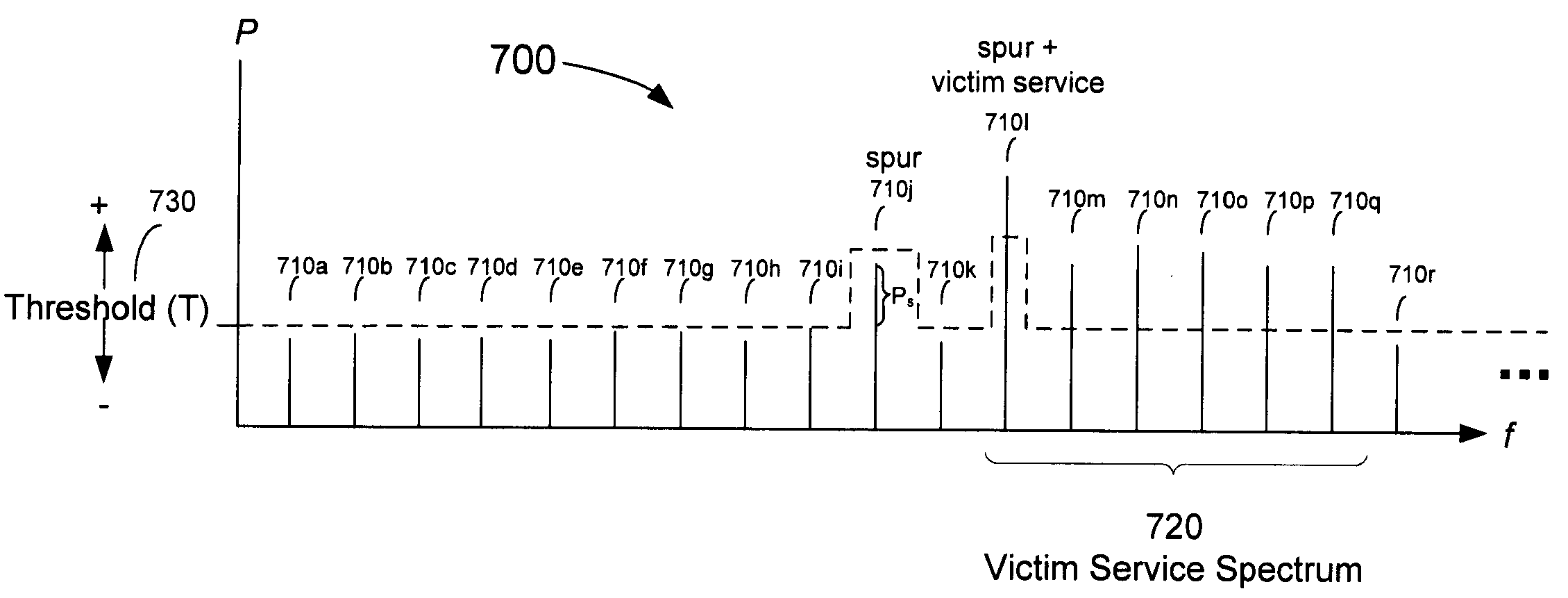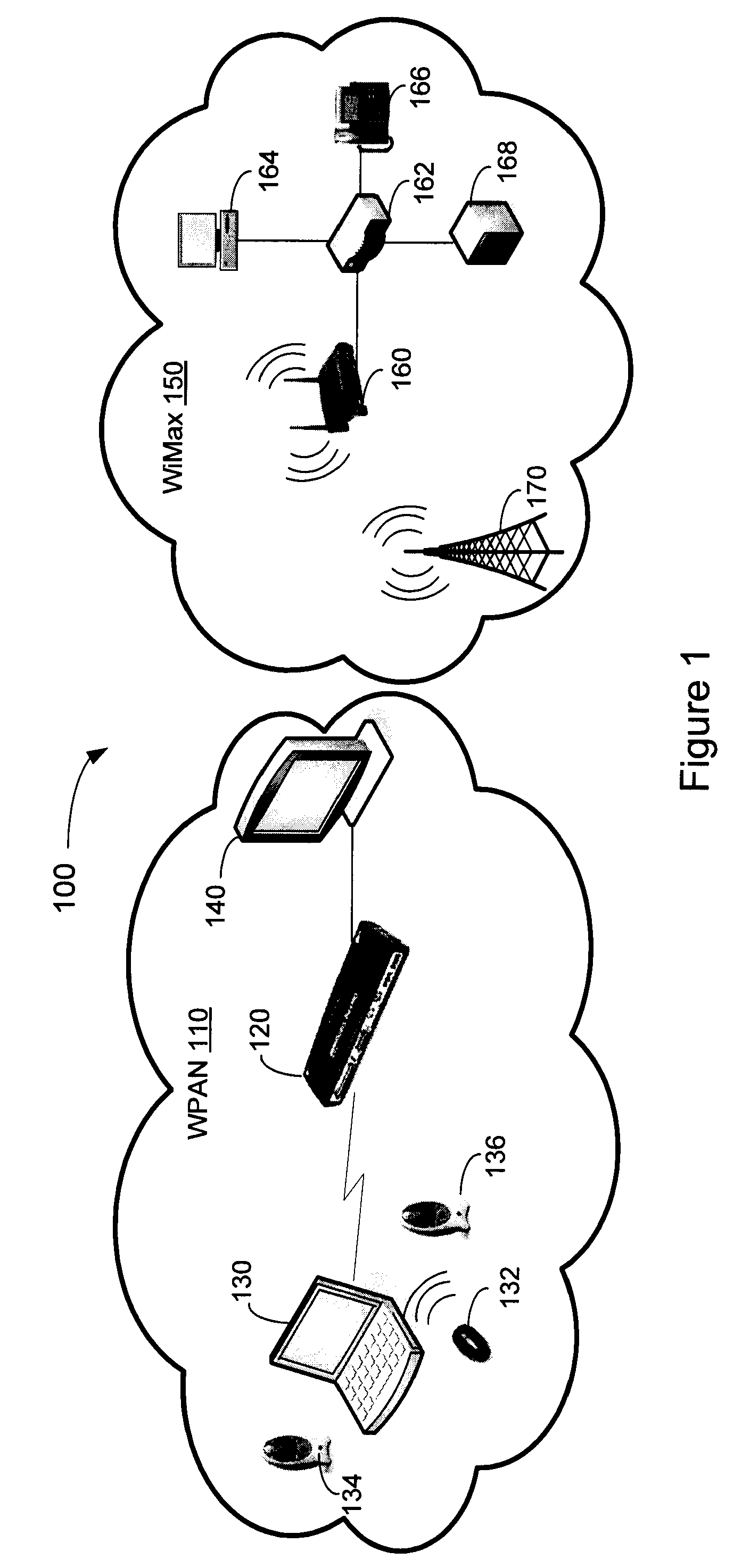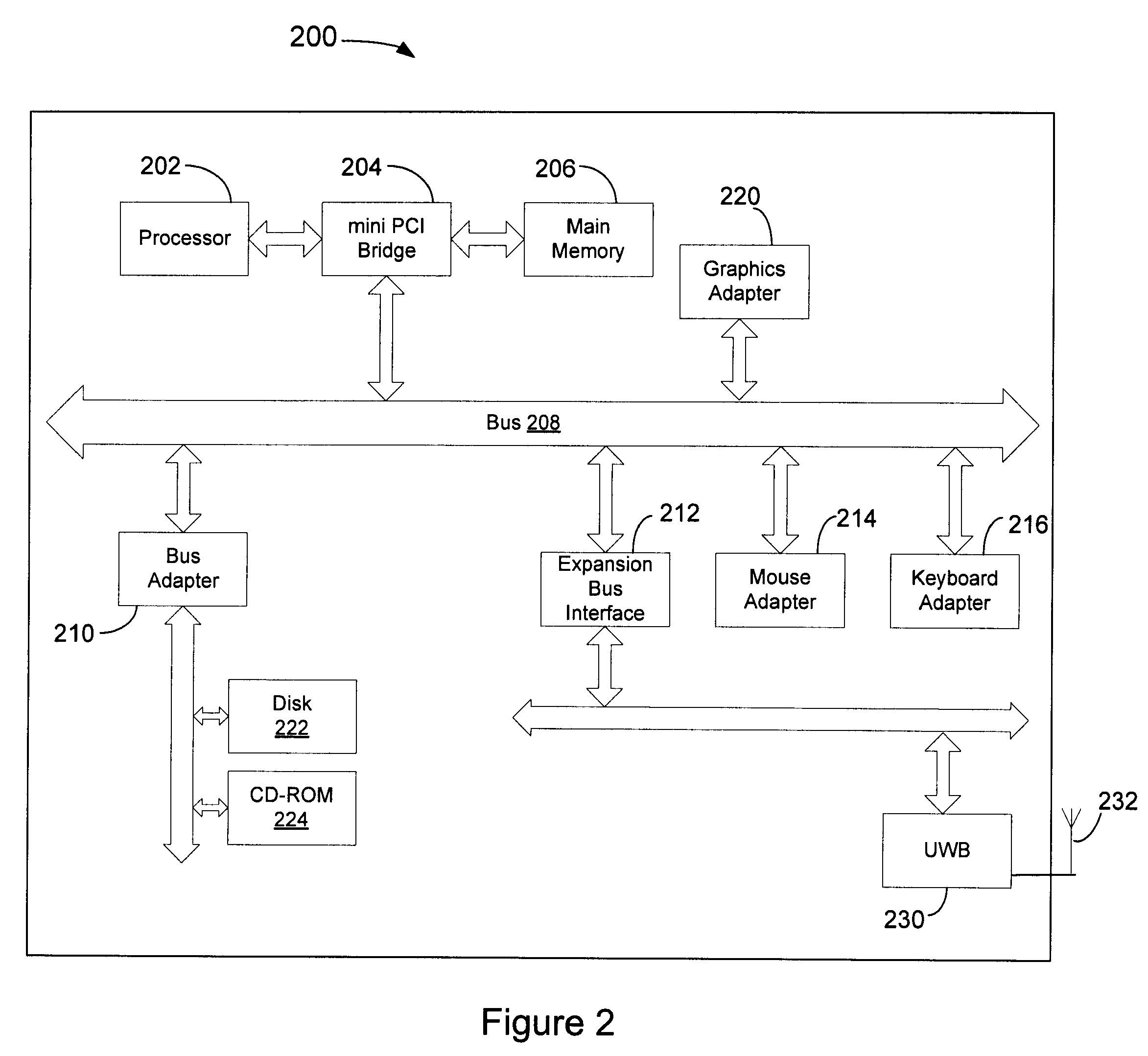System, Method and Computer-Readable Medium for Detection and Avoidance of Victim Services in Ultra-Wideband Systems
a technology of victim services and systems, applied in the field of system, method and computer-readable medium for detection and avoidance of victim services in ultra-wideband systems, can solve problems such as difficult problems to solve, unnecessary avoidance and denial of service, and increase the complexity of problems, so as to facilitate detection of interferers
- Summary
- Abstract
- Description
- Claims
- Application Information
AI Technical Summary
Benefits of technology
Problems solved by technology
Method used
Image
Examples
Embodiment Construction
[0031]It is to be understood that the following disclosure provides many different embodiments, or examples, for implementing different features of various embodiments. Specific examples of components and arrangements are described below to simplify the present disclosure. These are, of course, merely examples and are not intended to be limiting. In addition, the present disclosure may repeat reference numerals and / or letters in the various examples. This repetition is for the purpose of simplicity and clarity and does not in itself dictate a relationship between the various embodiments and / or configurations discussed.
[0032]Embodiments disclosed herein provide a method and system for detecting and avoiding interfering transmissions during ultra-wideband wireless communication. The method includes measuring the power of a frequency sub-carrier and calculating sub-carrier average power. If a spike in power of a tone exceeds an average power for that tone that is in excess of a thresho...
PUM
 Login to View More
Login to View More Abstract
Description
Claims
Application Information
 Login to View More
Login to View More - R&D
- Intellectual Property
- Life Sciences
- Materials
- Tech Scout
- Unparalleled Data Quality
- Higher Quality Content
- 60% Fewer Hallucinations
Browse by: Latest US Patents, China's latest patents, Technical Efficacy Thesaurus, Application Domain, Technology Topic, Popular Technical Reports.
© 2025 PatSnap. All rights reserved.Legal|Privacy policy|Modern Slavery Act Transparency Statement|Sitemap|About US| Contact US: help@patsnap.com



